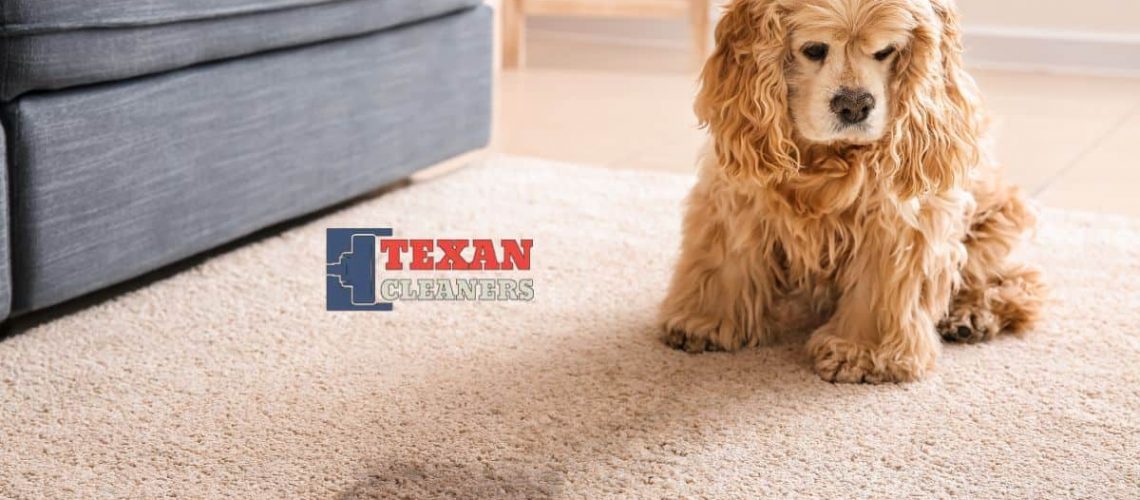Nobody likes to deal with urine stains on their carpets, but it happens. Whether you’re dealing with an accident from a pet or a young child, these stubborn stains can be difficult to remove. But don’t worry—there are simple steps you can take to effectively remove old urine stains from your carpets.
In this blog post, we will discuss how to identify the source of the stain and prepare a cleaning solution using detergent and vinegar. We will also cover other techniques such as blotting up excess liquid and using an enzyme cleaner if needed. Finally, we’ll explain how to vacuum up any residual powder left behind after drying completely. So let’s get started!
1. Identify the source of the stain
Identifying a stain’s source can be tricky, but it is a crucial step in cleaning up stains. If a person knows the type of material that has been stained and how long the stain has been there they will have a better chance of removing it. Acids or alkaline solutions should never be applied to materials without testing on an inconspicuous spot first as some substances can produce permanent discoloration. One way to identify the source of a stain is to lay a white cloth over the stain and examine it through the cloth as this will show what kind of color is actually being transfered onto the surface. Learning methods such as these make identifying stains easier so that people can remove them with minimal effort.
2. Prepare a cleaning solution using water, detergent and vinegar
An effective cleaning solution only requires a few simple household ingredients – water, detergent, and vinegar. A few drops of detergent will act as a surfactant to help break down oil, soil and grease. The cleaning power of the mixture is then enhanced by adding a teaspoon of white vinegar – it has natural deodorizing and disinfecting properties which can help remove stubborn dirt from surfaces. Be sure to mix the solution thoroughly to ensure even coverage for maximum cleaning efficiency, and don’t forget to adjust the quantities depending on the surface material you’re cleaning!
3. Apply the cleaning solution to the stain and let it sit for 10-15 minutes
Spills and stains can occur when you least expect them. Cleaning them up can be daunting, but with the right approach it does not have to be! When confronting a stain, it’s important to apply a cleaning solution designed for that type of stain. Gently spread the solution onto the stained area and let it sit uninterrupted for 10-15 minutes before wiping away with a damp cloth. This method is effective in lifting even the toughest of stains and leaving your surfaces looking good as new.
4. Blot up excess liquid with paper towels or a clean cloth
If you’ve had a spill or other accident involving some type of liquid, it is important to try and clean up the mess as soon as possible. A good way to start is to grab paper towels or a clean cloth and use them to blot up the excess liquid. Doing this will absorb much of the excess liquid before it seeps into surfaces or fabrics, which can make getting rid of the stain much easier. Make sure whatever you are using isn’t too wet itself; if its soaking wet, you might end up just spreading the mess around instead. The combination of dampening the area and then blotting it should help take care of any spills quickly and easily.
5. Rinse with cold water and blot dry again
It’s tempting to use hot water when cleaning a spill on your clothes, but rinsing with cold water is key for removing any staining. Blotting the area dry after doing this helps remove any lingering dirt or environmental particles that might not necessarily be seen. This process is an important step in making sure that you’re clothes and fabrics stay fresh and free from damage. So next time you’ve got a spot to clean, remember – rinse with cold water and blot dry again!
6. Use an enzyme cleaner if needed to break down the remaining urine residue
When dealing with pet urine, it’s often not enough to just mop away the mess – you also have to get rid of the lingering residue. This isn’t always an easy task, but don’t despair! Enzyme cleaners are specially formulated to break down organic material like urine, making it much easier to remove the remaining residue and its accompanying odor. If you’re having a hard time getting rid of the remnants of pet urine, try using an enzyme cleaner for better results. It may be just the thing you need to ensure your home or yard is free from both stains and nasty smells.
7. Vacuum up any residual powder left behind after drying completely
After heavy cleaning and scrubbing, the last step to ensure a spotless floor is not one to overlook – vacuuming up all the residual powder left behind. Doing this will help create an even stance for any polish or wax that may be applied, making for a much nicer end product. Vacuums with HEPA filters are great for picking up small particles like dust and dirt that can sometimes be problematic with regular vacuum cleaners. With these more powerful vacuums one sweep leaves the surface totally clean and free of the aftermath of all your cleaning efforts!
Conclusion
Removing old urine stains from carpets can be a challenging task. However, with the right approach and proper cleaning solutions, you can get rid of these difficult messes quickly and easily. By following our 7-step guide on how to remove urine stains from your carpets, you’ll have no trouble keeping them looking fresh and clean all year round! With this information in hand, nothing should stand between you and spotless floors ever again.


